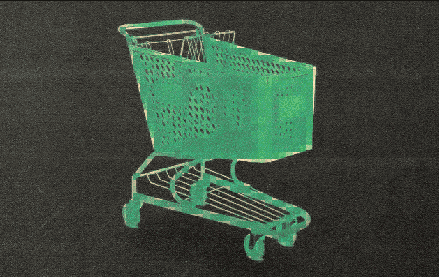Join us Dec. 1-3 in New Orleans for the Digiday Programmatic Marketing Summit
Flight to quality takes hold in end-of-year video ad spending, pushing up prices
The end of the year is regularly a good time for those selling quality video. It’s even better this year, thanks to concerns about brand safety brought on by YouTube’s continued controversies and a desire by brands to stay away from political news.
According to ad buyers, that’s meant adding spending on outlets like Hulu and ESPN. Conversations with four media agencies executives show that not every client is halting advertising on YouTube and hard news sites, but in general, programmatic video CPMs at nonpolitical publishers and connected TV providers like Apple TV and Amazon Fire have been increasing, which could partially be ascribed to clients’ growing demand for brand-safe content, according to agency executives.
“I think video CPMs on Hulu have increased around 20 percent year over year, even more expensive than prime-time TV sometimes,” said a media head from a Chicago-based agency. “Generally speaking, open exchange video CPMs are up 5 to 8 percent year over year.”
The agency executive said two financial services clients have stopped programmatic ads from politics news on any site since around a year ago — and the two brands haven’t gone back to advertising on hard news sites today — while most clients that target millennials and younger audiences now feel comfortable with advertising on YouTube.
“We haven’t started to do a big shift into premium programmatic video yet, largely because that is typically a large holding-company level private marketplace deal tactic,” said this person. “For certain luxury clients like automotive, it may make sense to cherry-pick premium video inventory, but largely we don’t see the economy of scale in [PMPs].”
Brand-safety concerns have changed where ad buyers spent their video budgets this year. Standard Media Index surveyed 14 video networks and platforms — including YouTube, Snapchat, Roku, Facebook, Viacom and Hulu — and found that in terms of direct buys, YouTube — while the largest by video ad spend volume — is the only company where brands’ video ad spend declined, by 9 percent year over year, from when brand-safety discussions started in April to October. In comparison, during the same period, brands’ video ad spend on Roku, Snapchat and Hulu increased by 154 percent, 50 percent and 19 percent year over year, respectively.
Standard Media Index said the above numbers are based on media-buying invoices, and its survey pool represents approximately 70 percent of all U.S. ad agency spend. But the company doesn’t distribute dollar figures for its digital data because it doesn’t cover the complete digital market.
Rory O’Flaherty, vp of performance media for agency Huge, said every client’s brand-safety tolerance is different: Some brands take an audience-first approach so they are more lenient, while others don’t want to be adjacent to news content at all. But a bigger trend is more programmatic ad spend is going into video on demand or connected TV, which is relatively brand-safe and the actual creative is great, he said.
“Generally speaking, we haven’t seen much increase in programmatic video CPMs, but more ad demand definitely goes to certain publishers based on brand safety and high viewability,” said O’Flaherty. “But remember, if you pull ads from YouTube and news sites altogether, you are losing lots of benefits in reaching your audience.”
More in Marketing

Walmart, Target, Kroger swap name brands for private labels in Thanksgiving meal deals
Walmart’s website says its meal costs 25% less than the basket it offered last year, and that the turkey was at the lowest price since 2019.

Amid search wars, Google touts YouTube, display inventory to advertisers
Google is pushing Demand Gen and YouTube to ad partners, hedging against the inevitable erosion of its search business by AI chatbots.

Future of Marketing Briefing: The agentic turn inside programmatic advertising
The arrival of the Agentic RTB Framework this week lands as this week lands as the third agentic standard in under a month.






